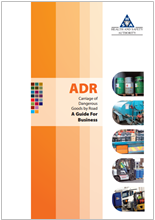Informazione tecnica HSE / 25 ° anno
/ Documenti disponibili:
45.698
/ Documenti scaricati: 34.734.449
/ Documenti scaricati: 34.734.449
This publication is a revision of IAEA Safety Standards Series No. SSR-6, Regulations for the Safe Transport of Radioactive Material, 2012 Edition. The revision was undertaken by amending, adding and/or deleting specific paragraphs. The paragraph numbering system used for the revision.
Radioactivity is a natural phenomenon and natural sources of radiation are features of the environment. Radiation and radioactive substances have many beneficial applications, ranging from power generation to uses in medicine, industry and agriculture. The radiation risks to workers and the public and to the environment that may arise from these applications have to be assessed and, if necessary, controlled. Activities such as the medical uses of radiation, the operation of nuclear installations, the production, transport and use of radioactive material, and the management of radioactive waste must therefore be subject to standards of safety.
Regulating safety is a national responsibility. However, radiation risks may transcend national borders, and international cooperation serves to promote and enhance safety globally by exchanging experience and by improving capabilities to control hazards, to prevent accidents, to respond to emergencies and to mitigate any harmful consequences. States have an obligation of diligence and duty of care, and are expected to fulfil their national and international undertakings and obligations. International safety standards provide support for States in meeting their obligations under general principles of international law, such as those relating to environmental protection. International safety standards also promote and assure confidence in safety and facilitate international commerce and trade. A global nuclear safety regime is in place and is being continuously improved.
IAEA safety standards, which support the implementation of binding international instruments and national safety infrastructures, are a cornerstone of this global regime. The IAEA safety standards constitute a useful tool for contracting parties to assess their performance under these international conventions.
THE IAEA SAFETY STANDARDS The status of the IAEA safety standards derives from the IAEA’s Statute, which authorizes the IAEA to establish or adopt, in consultation and, where appropriate, in collaboration with the competent organs of the United Nations and with the specialized agencies concerned, standards of safety for protection of health and minimization of danger to life and property, and to provide for their application. With a view to ensuring the protection of people and the environment from harmful effects of ionizing radiation, the IAEA safety standards establish fundamental safety principles, requirements and measures to control the radiation exposure of people and the release of radioactive material to the environment, to restrict the likelihood of events that might lead to a loss of control over a nuclear reactor core, nuclear chain reaction, radioactive source or any other source of radiation, and to mitigate the consequences of such events if they were to occur.
The standards apply to facilities and activities that give rise to radiation risks, including nuclear installations, the use of radiation and radioactive sources, the transport of radioactive material and the management of radioactive waste. Safety measures and security measures1 have in common the aim of protecting human life and health and the environment. Safety measures and security measures must be designed and implemented in an integrated manner so that security measures do not compromise safety and safety measures do not compromise security.
The IAEA safety standards reflect an international consensus on what constitutes a high level of safety for protecting people and the environment from harmful effects of ionizing radiation. They are issued in the IAEA Safety Standards Series, which has three categories (see Fig. 1). Safety Fundamentals Safety Fundamentals present the fundamental safety objective and principles of protection and safety, and provide the basis for the safety requirements.
Safety Requirements An integrated and consistent set of Safety Requirements establishes the requirements that must be met to ensure the protection of people and the environment, both now and in the future. The requirements are governed by the objective and principles of the Safety Fundamentals. If the requirements are not met, measures must be taken to reach or restore the required level of safety.
The format and style of the requirements facilitate their use for the establishment, in a harmonized manner, of a national regulatory framework. Requirements, including numbered ‘overarching’ requirements, are expressed as ‘shall’ statements. Many requirements are not addressed to a specific party, the implication being that the appropriate parties are responsible for fulfilling them.
...add more
IAEA Safety Standards 2018
Collegati

UNI EN 14564:2019 - La norma si applica alle cisterne utilizzate per il trasporto di merci pericolose e fornisce termini e...

ADR 2013
European Agreement concerning the International Carriage of Dangerous Goods by Road
ADR applicable as from 1 January 2013
The European Agreement concerning the Internat...

A Guide For Business
This guide for business is geared towards businesses that are involved in the consignment, loading/unloading and carriage of dangerous goods by r...
Testata editoriale iscritta al n. 22/2024 del registro periodici della cancelleria del Tribunale di Perugia in data 19.11.2024